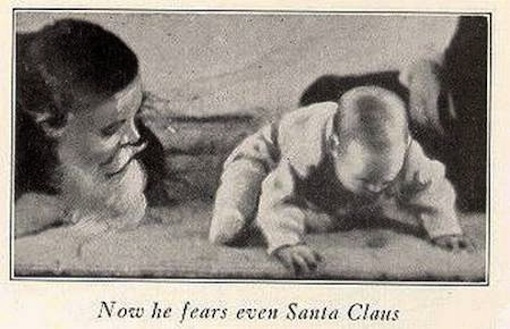The little Albert Experiment was a study done to help Psychologist understand Classical Conditioning in humans. This study is known for their advances in stimulus generalization. During this study, Watson observed that children had a fear to loud noises. This was an unconditioned response and Watson wanted to figure out why exactly children reacted this way. He used the children's unconditioned response of fear to see how he could alter that experience. The aim was to test children emotional stability. For the study they used a nine-month-old infant from the hospital. This child was called Albert and they used the same experience Ivan Pavlov used with his dogs. Albert was given a baseline emotional test. Albert was exposed to a white rat, a rabbit, a dog, a monkey, masks, and all other kinds of stimuli. Albert showed no fear to these items.
During the experiment, Albert was placed on a mattress and a white rat. While playing with the rat, Watson and Rayner made a loud sound behind alberts back. Albert responded with fear and started crying. After a few rounds of this behavior, Albert was presented with the rat again. When seeing the rat, Albert was distressed. Albert associated the rat with the loud noise and began to fear the rat. This became a conditioned stimulus with an emotional response. After this experience, Albert had shown fear to multiple things thats were furry. This behavior overall became long lasting and made him scared of everyday things.

Comments
Post a Comment